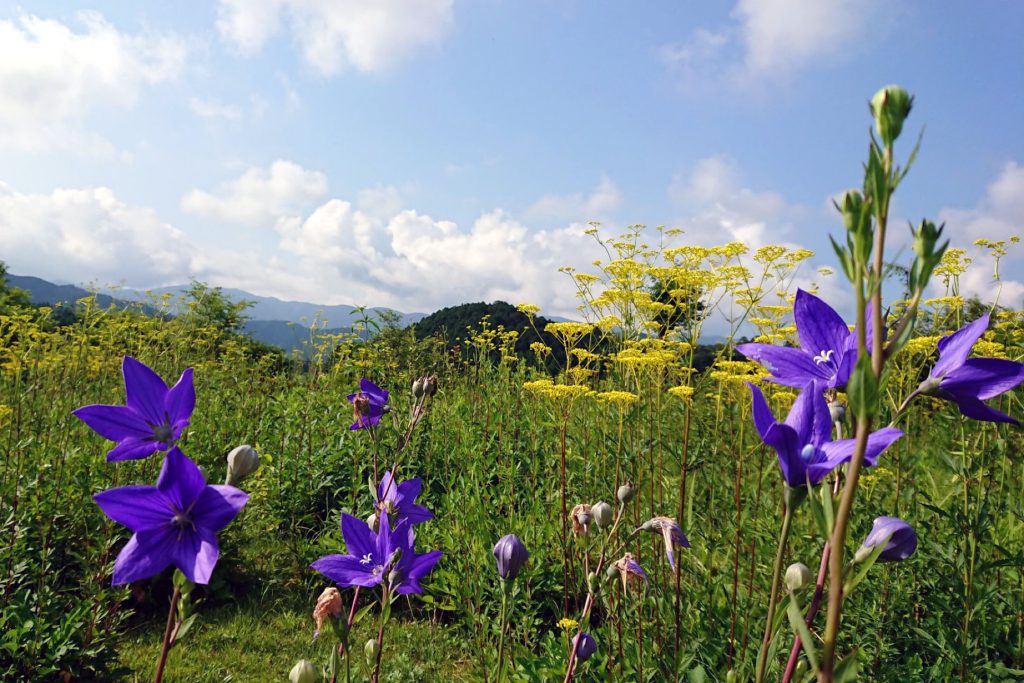
It became a haiku in which three seasonal words, Ominaeshi, Kikyo, and autumn, overlap. “Kikasanari ( Seasonal stacking) refers to a haiku that contains two or more seasonal words that represent a seasonal theme. There are various rules in haiku, and one of the usages that should be avoided is “Kikasanari”. The interesting thing about haiku is how it expresses emotions and scenes in just 17 syllables of 5,7,5, and evokes the reader’s sympathy. One of the real pleasures of writing a haiku is to follow the rules and achieve this. However, there are times when I want to express something by breaking this rule, and there are times when I have no choice but to break it. In the case of the haiku above, I just happened to see Ominaeshi and Kikyo blooming side by side, so I expressed that this was exactly the autumn scenery, and that I felt autumn even more. Some people don’t know when the flowers of Ominaeshi and Kikyo bloom. By the word “autumn”, we can understand that both Joroka and Kikyo are autumn flowers.
女郎花、桔梗、そして秋、季語が三つの季重なりの俳句になりました。季重なりとは一つの俳句の中に、季題を表す季語が二つ以上入っている句を言います。俳句には様々な決まり事があり、季重なりも避けるべき用法の一つです。俳句の面白さは、五七五のたった十七音の中に、いかに情感や情景を表現し、読み手の共感を呼び起せるかです。決まり事を守ってこのことを実現するのが俳句を作る醍醐味の一つです。しかし、時にはこの決まり事を破ってでも表現したいこともあるば、破らざるを得ない場合があります。上の俳句の場合、たまたま女郎花と桔梗が並んで咲いているのが目に飛び込んできた、ああ正しく秋の風景だと,いっそう秋を実感したと読み込んだのです。敢えて季語と言えば「秋」です。女郎花も桔梗も、人によってはいつの花か分かりません。秋と言う言葉によって、女郎花も桔梗も秋の花だと分かるわけです。
